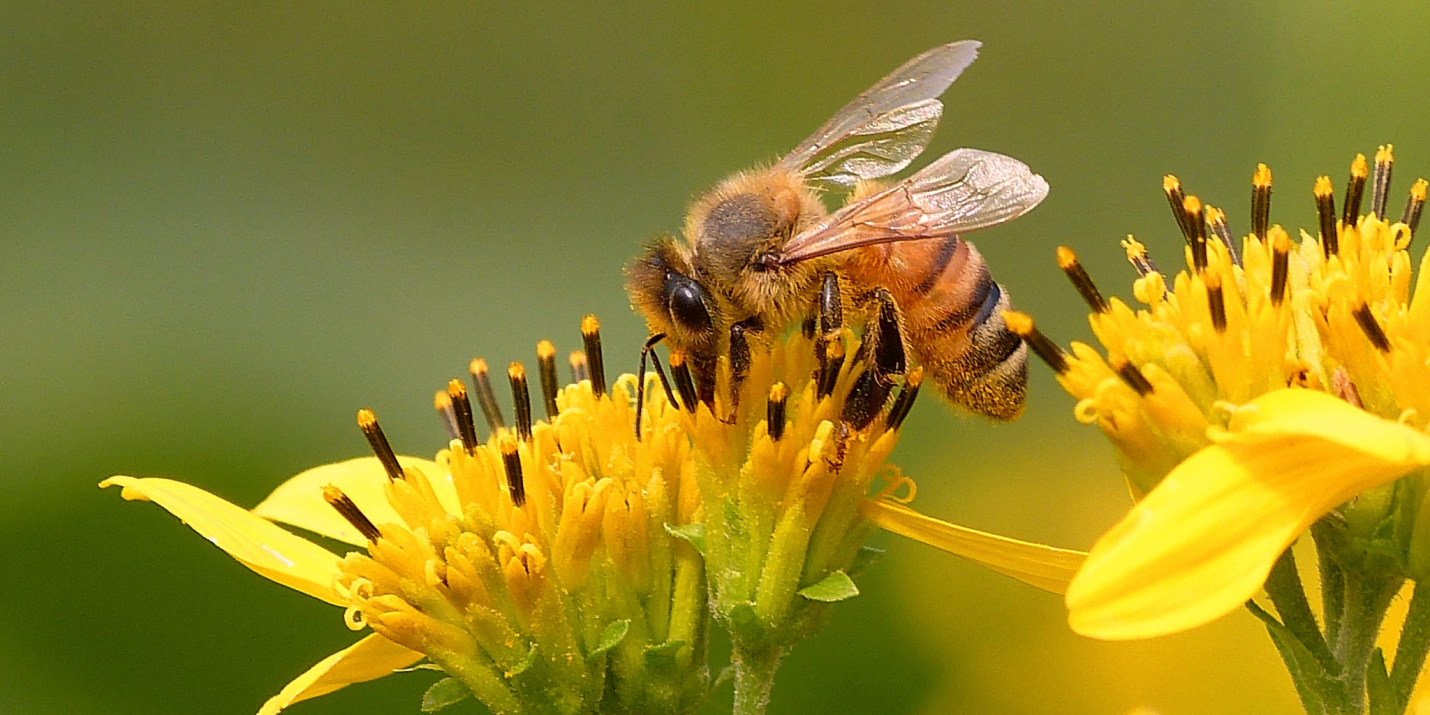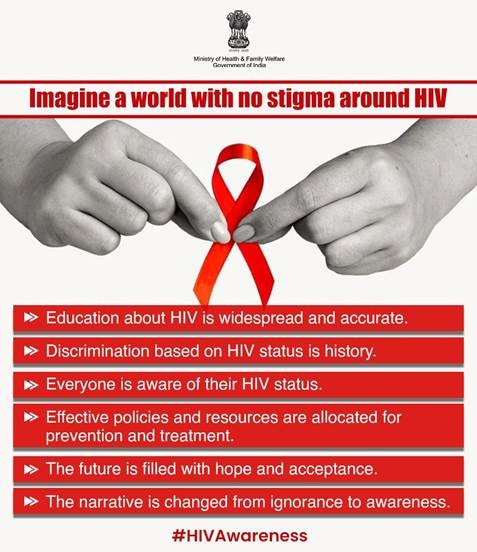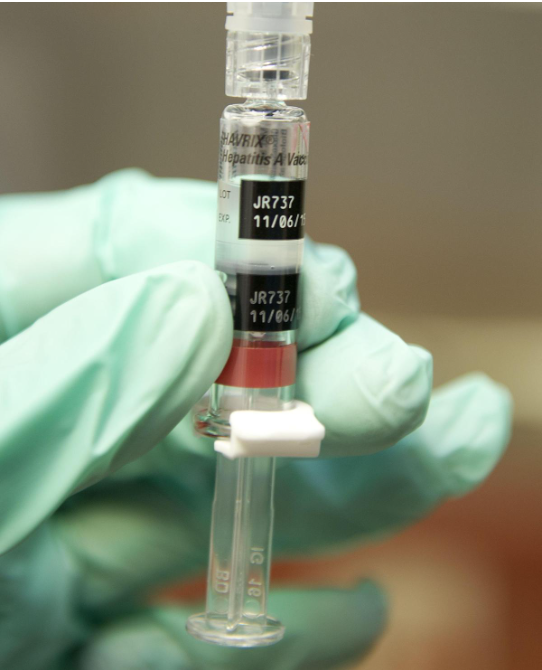
Copyright infringement not intended
Picture Courtesy: beyondpesticides.org
Context: A recent paper published in the journal Environmental Microbiology Reports proposes that honeybees could serve as biomonitors for the spread of antimicrobial resistance (AMR) in the environment.
Details
- The study published in the journal Environmental Science and Technology highlights the potential of European honeybees (Apis mellifera) as biomonitoring agents for assessing the spread of antimicrobial resistance (AMR) in urban environments.
- The paper argues that honeybees are exposed to a variety of bacteria and antibiotics through their interactions with flowers, soil, water and beekeepers and that their gut microbiome could reflect the AMR patterns in their surroundings.
- The honeybee gut samples could be collected and analyzed for AMR genes using molecular methods, and this could provide a cost-effective and non-invasive way of monitoring AMR in different regions and habitats.
Key Highlights of the research and its implications
AMR and Its Global Impact
- AMR refers to the ability of bacteria and other microorganisms to resist the effects of drugs commonly used to treat infections. This resistance can render previously treatable infections untreatable, posing a major threat to global public health.
- The United Nations Environment Programme report from February 2023 highlighted that if AMR is not effectively addressed, it could result in up to 10 million deaths annually by 2050. This projection is comparable to the global death rate from cancer in 2020, underlining the severity of the issue.
- The 2022 World Health Organization report indicated that over 50% of life-threatening bacterial infections were becoming resistant to treatment. This statistic is alarming, especially considering that data reporting challenges during the COVID-19 pandemic may have underestimated the true extent of the problem.
Role of European Honeybees
- European honeybees, or Apis mellifera, were used in this study as environmental proxies or indicators. They interact with various elements in the environment, including soil, dust, air, water, and pollen, as they forage for nectar and pollen.
- These interactions with the environment make honeybees valuable for monitoring pollution and environmental contaminants that could pose risks to humans. Essentially, the bees act as "crowdsourced" monitors of environmental health.
Class 1 Integrons as AMR Indicators
- The researchers focused on Class 1 integrons (intI1) as a universal indicator of AMR. Integrons are genetic elements that play a role in capturing and spreading antibiotic resistance genes among bacteria.
- The presence of intI1 was widespread in the urban environment, with 52% of the bees examined carrying these genetic elements. This suggests that AMR-related factors are prevalent in the bees' foraging areas.
Sampling and Findings
- The study involved the examination of the gut bacteria of 144 European honeybees from 18 hives owned by citizen-scientist beekeepers in Greater Sydney, Australia.
- The results revealed a high prevalence of AMR in the sampled bees, with 80% testing positive for one or more AMR targets. This finding underscores the extent to which AMR-related factors are present in urban environments.
Unexpected Distribution
- Contrary to initial expectations, the researchers discovered that Class 1 integrons were distributed across various locations rather than being concentrated in densely populated urban areas.
- Higher concentrations of these genetic elements were found near bodies of water such as dams and lakes, suggesting that water sources may play a role in the dissemination of AMR.
Temporal Aspect
- European honeybees have a relatively short lifespan of about four weeks. This temporal aspect is crucial because it means that whatever is detected in their digestive tract reflects the current state of the environment.
- This temporal sensitivity makes honeybees valuable indicators of present environmental conditions regarding AMR, as their findings provide insights into the current status of antibiotic resistance in the areas where they forage.

Biomonitoring
Meaning
- Biomonitoring is the process of using living organisms to assess and monitor the quality of the environment, including air, water, soil, and ecosystems. These living organisms, referred to as bioindicators or biomarkers, can provide valuable information about the environmental conditions, the presence of pollutants, and the health of ecosystems.
- These organisms can be plants, animals, microorganisms, or any biological entity that can respond to environmental changes and stressors.
Role in assessing and understanding environmental health and quality
Sensitive to Environmental Changes
- Biomonitoring organisms are carefully chosen based on their ability to respond sensitively to specific environmental changes or the presence of pollutants. These organisms can act as early indicators of disturbances in the environment.
- Sensitivity varies among different organisms and can depend on factors such as their life cycle, physiology, and habitat preferences.
- For example, certain aquatic insects are highly sensitive to changes in water quality, making them effective bioindicators for water pollution.
Integration of Biological Responses
- Biomonitoring goes beyond simple data collection by integrating the biological responses of organisms with environmental data. This holistic approach helps researchers and environmental scientists gain a more comprehensive understanding of the state of the environment.
- Biological responses can include behavioural changes, physiological adaptations, changes in reproductive patterns, and alterations in growth rates. These responses are observed and analyzed in the context of environmental conditions.
- Integrating biological responses with environmental data allows for a more nuanced interpretation of the impacts of environmental stressors.
Long-term Monitoring
- One of the strengths of biomonitoring is its ability to provide insights into long-term trends and changes in ecosystems. Unlike short-term studies, biomonitoring programs are designed for continuous or periodic monitoring over extended periods.
- Long-term monitoring is particularly valuable for assessing the effects of chronic or gradual environmental changes, such as climate change, habitat degradation, or slow accumulation of pollutants in ecosystems.
- By tracking changes over time, researchers can identify trends and make informed predictions about future environmental conditions.
Local and Global Applications
- Biomonitoring can be applied at multiple scales, making it versatile for various environmental assessments:
- Local Scale: Biomonitoring can be used to assess pollution and environmental health in specific areas, such as urban environments, industrial sites, or bodies of water like lakes and rivers.
- Regional Scale: Researchers can use biomonitoring to study broader regions or ecosystems, addressing regional environmental challenges and conservation efforts.
- Global Scale: Biomonitoring data can contribute to global assessments of environmental health and trends. For instance, it can provide insights into global patterns of biodiversity loss or the spread of invasive species.
- This scalability allows biomonitoring to address a wide range of environmental issues, from localized pollution to global biodiversity conservation.
Significance of biomonitoring and its various advantages and applications
Early Warning
- Biomonitoring serves as an early warning system for environmental degradation and pollution. Organisms chosen for monitoring are sensitive to changes in their environment, and they can provide early indications of stress or pollution. This early detection allows for prompt action to mitigate further damage, preventing more severe environmental consequences.
Assessing Ecosystem Health
- One of the key roles of biomonitoring is to assess and monitor the overall health of ecosystems. Healthy ecosystems provide essential services such as clean water, air, and habitat for wildlife.
- Biomonitoring helps in evaluating the condition of ecosystems by examining the responses of organisms within them. A diverse and thriving community of organisms often indicates a healthy ecosystem, while declines in biodiversity or the presence of stressors may signal issues.
Human Health
- Biomonitoring also has implications for human health. It can assess potential risks associated with exposure to environmental contaminants, which can enter the human food chain or affect the quality of air and water that people use. For example, biomonitoring can measure the levels of pollutants in fish from a contaminated river, providing insights into the safety of consuming those fish and informing public health recommendations.
Policy and Regulation
- Biomonitoring data plays a crucial role in shaping environmental policies and regulations. Policymakers rely on scientific evidence to establish and enforce rules that protect natural resources and public health.
- Biomonitoring findings provide empirical data that can support evidence-based decision-making. This data can lead to regulations that limit pollutant emissions, protect sensitive ecosystems, and ensure safe environmental practices.
Research and Scientific Understanding
- Biomonitoring supports scientific research and contributes to a deeper understanding of ecological and environmental systems. It provides real-world data that scientists use to investigate the impacts of various stressors on ecosystems.
- Researchers can use biomonitoring data to study the effects of pollution, climate change, habitat loss, and other factors on species, populations, and ecosystems. This knowledge informs ecological theories and conservation strategies.
Public Awareness and Engagement
- Biomonitoring findings can raise public awareness about environmental issues. When people see tangible evidence of environmental changes through biomonitoring results, they may become more engaged in conservation efforts.
- Citizen science projects that involve the public in biomonitoring activities can foster environmental stewardship and a sense of responsibility for the natural world.
Adaptive Management and Conservation
- Biomonitoring data can inform adaptive management approaches in conservation and resource management. It allows for the adjustment of strategies based on real-time or long-term monitoring results.
- Conservationists and land managers can use biomonitoring findings to make informed decisions about land use, habitat restoration, and conservation priorities.
Challenges that biomonitoring faces
Selecting Appropriate Organisms
- Choosing the right biomonitoring organisms can be a complex task. The organisms selected should be sensitive to the specific environmental factors or pollutants being studied.
- Different species and even different life stages of the same species can have varying sensitivities to environmental changes. Therefore, careful consideration is needed to ensure that the chosen organisms are appropriate indicators for the target stressors. For example, if the goal is to monitor heavy metal pollution in aquatic environments, selecting the right aquatic species with a known sensitivity to these metals is crucial.
Interpreting Data
- Interpreting biomonitoring data can be challenging because changes in biomarkers or responses of organisms may have multiple underlying causes. These causes can include natural environmental variability, interactions between multiple stressors, and species-specific responses.
- A deep understanding of the biology and ecology of the chosen organisms is necessary to differentiate between changes attributable to pollution or other stressors and those that are part of natural ecological processes.
- Statistical analysis and the integration of data from multiple organisms and environmental parameters may be required for accurate interpretation.
Standardization
- Standardization of protocols and methodologies is crucial for ensuring the comparability of biomonitoring data between different studies, regions, and researchers.
- Without standardized approaches, it becomes difficult to make meaningful comparisons or draw general conclusions from biomonitoring data.
- Developing and adhering to standardized protocols can be challenging, as environmental conditions, species, and stressors can vary widely between study areas.
Baseline Data
- Establishing baseline data for ecosystems before disturbances occur is essential for accurately detecting changes. Without a clear understanding of what is "normal" for an ecosystem, it can be challenging to determine the significance of observed deviations.
- Gathering baseline data can be time-consuming and expensive, especially in remote or pristine environments that are difficult to access.
- In some cases, historical data may be limited or nonexistent, making it even more challenging to establish baselines.
Cost and Resources
- Biomonitoring studies can be resource-intensive, requiring funding for fieldwork, laboratory analysis, equipment, and trained personnel.
- The cost and resource requirements can limit the scope and scale of biomonitoring efforts, particularly in regions with limited funding for environmental research.
Technological Challenges
- The use of advanced technologies, such as DNA sequencing and remote sensing, can enhance biomonitoring capabilities. However, staying up-to-date with rapidly evolving technologies and incorporating them into biomonitoring practices can be challenging for researchers and organizations.
Ethical Considerations
- Biomonitoring may involve collecting and potentially harming living organisms. Researchers must carefully consider the ethical implications of their work, including the welfare of the monitored organisms and potential impacts on ecosystems.
To advance biomonitoring efforts, the following steps can be taken:
Standardization
- Development of Protocols: Establish and disseminate standardized protocols and methodologies for biomonitoring studies. These protocols should cover aspects such as sampling procedures, data collection methods, and laboratory analysis techniques.
- Global Collaboration: Foster international collaboration to develop consensus on standardized procedures. Engage with scientific communities, government agencies, and environmental organizations to ensure widespread adoption.
- Training and Certification: Offer training and certification programs for researchers and technicians involved in biomonitoring. Ensure that professionals are proficient in following standardized protocols.
Advancements in Technology
- Research and Innovation: Invest in research and innovation to leverage cutting-edge technologies for biomonitoring. Embrace tools such as DNA sequencing, remote sensing, and autonomous sensors to enhance data collection and analysis.
- Data Management: Develop robust data management systems capable of handling large datasets generated by advanced technologies. Prioritize data security, accessibility, and quality control.
- Capacity Building: Establish training programs and workshops to build the capacity of researchers and technicians to effectively use advanced technologies in biomonitoring projects.
Multi-Organism Approaches
- Ecosystem-Based Monitoring: Promote the use of ecosystem-based monitoring strategies that involve multiple biomonitoring organisms. This approach provides a more comprehensive understanding of environmental conditions and ecological interactions.
- Indicator Guilds: Explore the concept of indicator guilds, where groups of organisms collectively serve as indicators of ecosystem health. These guilds can capture a broader range of ecological responses and interactions.
- Cross-Species Comparisons: Encourage researchers to compare data from different biomonitoring organisms within the same ecosystem. This approach can help identify consistent patterns and discrepancies.
Integration with Policy
- Policy-Research Partnerships: Establish collaborative partnerships between scientists, environmental agencies, and policymakers to ensure that biomonitoring data directly informs decision-making processes.
- Data Accessibility: Develop user-friendly platforms and formats for sharing biomonitoring data with policymakers. Ensure that data is easily accessible and comprehensible.
- Regular Reporting: Establish mechanisms for regular reporting of biomonitoring findings to policymakers. Keep policymakers informed about environmental trends, emerging issues, and potential policy interventions.
Public Engagement
- Citizen Science Initiatives: Create and support citizen science programs that actively involve the public in biomonitoring efforts. Encourage individuals and communities to participate in data collection, monitoring, and reporting.
- Education and Outreach: Develop educational materials and conduct outreach initiatives to raise awareness about the importance of biomonitoring in environmental protection. Engage schools, community organizations, and environmental NGOs in educational campaigns.
- Community Empowerment: Empower local communities to take an active role in monitoring and conserving their natural environments. Provide training and resources to enable communities to collect valuable biomonitoring data.

Conclusion
- The research demonstrates the potential of European honeybees as real-time environmental monitors for assessing the prevalence and distribution of antimicrobial resistance in urban environments. Their interaction with various elements in the environment and their short lifespan make them valuable tools for studying the dynamic nature of AMR and its relationship with environmental factors. Understanding these dynamics is essential for addressing the growing global health threat posed by antibiotic resistance.
Must Read Articles:
ANTIBIOTICS RESISTANCE: https://www.iasgyan.in/daily-current-affairs/antibiotics-resistance
Antimicrobial Resistance And Antimicrobial Waste: https://www.iasgyan.in/daily-current-affairs/antimicrobial-resistance-and-antimicrobial-waste
|
PRACTICE QUESTION
Q. How does environmental pollution, particularly air and water pollution, affect biodiversity? Explain the direct and indirect impacts on various ecosystems and species. Additionally, what are the key challenges in mitigating these effects, and what strategies can be employed to safeguard biodiversity in the face of ongoing pollution trends?
|
https://www.downtoearth.org.in/news/health/honeybees-could-be-biomonitors-for-amr-spread-suggests-paper-91598











